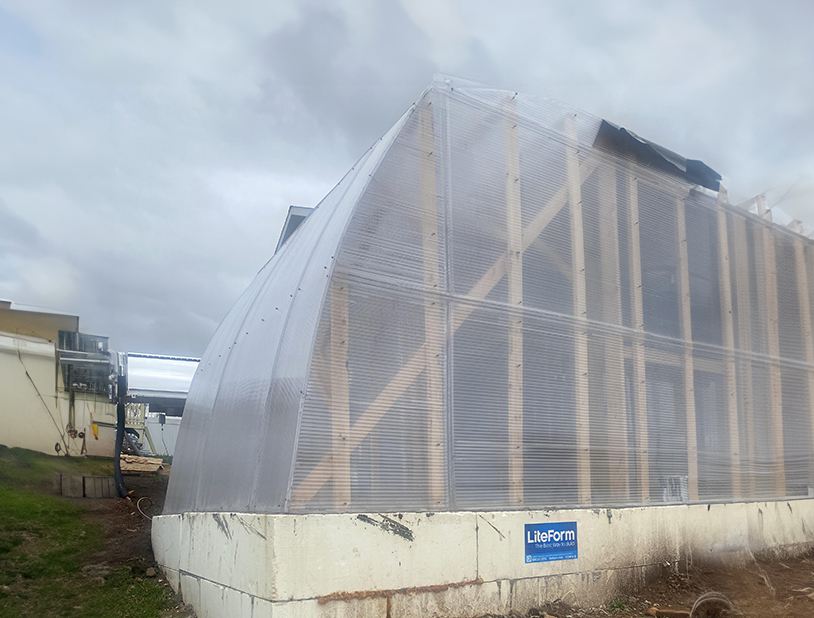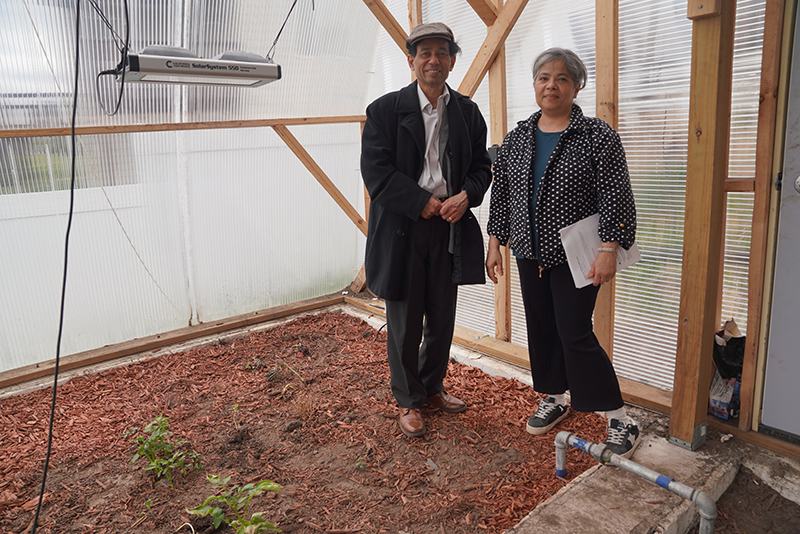Mines and Shende LLC Create Extreme Weather Greenhouse Prototype to Support Local Farmers

Nestled at the edge of the Black Hills, Rapid City is no stranger to wild weather swings—where a sunny 80-degree afternoon can turn into snow flurries and 40 by morning. This unpredictable climate makes growing fruits and vegetables a serious challenge, even during the so-called “stable” seasons.
South Dakota Mines professor Rajesh Shende, Ph.D., interim department head and professor in the Karen M. Swindler Department of Chemical and Biological Engineering, and Shende LLC business owner Anuradha (Anu) Shende, Ph.D., and Mines associate research professor, have just completed the first phase of a United States Department of Agriculture Small Business Innovation Research (USDA-SBIR) grant awarded to Shende LLC, in which they built an energy-efficient extreme weather solar greenhouse with a goal of helping local small farms grow produce year-round.
The $115,504 grant funded a greenhouse that uses a compound parabolic solar concentrator fitted with a single-axis solar tracker and an oil heat transfer system to convert solar energy to thermal energy. The solar concentrator was supplied by Environmental Solar Systems, a Massachusetts-based company. The prototype, built in the couple’s backyard, has a maze of pipes three feet under the ground that circulates solar-heated oil to warm the soil.
The 75-square-foot planting area is insulated underground with a protective wall, ensuring stable conditions for growth. Clear triple-wall polycarbonate glazing—16 mm thick—maximizes solar gain while providing excellent insulation and hail resistance, Anu explained. Inside the greenhouse, sensors monitor key metrics like humidity and temperature, transmitting data every 10 minutes to a computer inside the couple's home.
A $33,000 subaward from Shende LLC supported Grant Bauer (MS ChemE 24), who worked
on the project while obtaining his master’s degree.
Local contractors Bang-up Construction and Silverback Plumbing helped with the construction of the greenhouse prototype. Shannon Mutschelknaus, owner of Wayward Springs Acres in Aurora, S.D., consulted on the project.
“Rapid City was declared one of the cities with the most unpredictable weather,” Anu said. The existing winter greenhouses perform poorly in the frequent high winds, hailstorms and cold winters. Rapid City urban farmers have limited crop choices and a short six to seven-month growing period. There is a great need to innovate greenhouse structures for superior performance and durability for locations with extreme and unpredictable weather such as Rapid City.”
With high demand but little supply, most produce is imported from warmer states, leading to higher prices and often lower quality. The short growing season and unpredictable weather also limit area farmers to a few crops such as corn, soybeans and wheat.
“If this takes off, we will be able to grow almost any plant,” Anu said. The team has identified many changes that will improve solar heat retention, especially during consecutive cold and cloudy days.
Anu’s idea for the greenhouse stemmed from a hobby she started during the pandemic.
Traditional winter greenhouses depend on fossil fuels for heating and cooling, making them cost-prohibitive. Although solar greenhouses harness free solar energy for heating, most winter solar models still require supplemental fossil fuels and are not built to withstand the frequent high winds and hailstorms common in Rapid City.
China has had success in off-season crop cultivation with similar solar greenhouses that operate year-round in the coldest areas of the country, Anu said. “This type of sustainable, affordable winter greenhouse could bring significant supplemental income to small farmers from growing warm-weather produce all year round,” Anu said, citing produce such as okra, eggplant, zucchini, green beans, and cucumbers, which are either unavailable or expensive during winter.
Rajesh and Anu have completed the first prototype of the greenhouse and are working to overcome initial design challenges to enhance the final product.
With their innovative solar greenhouse design, Rajesh and Anu are paving the way for a more sustainable, resilient future for local farmers—bringing year-round, affordable, high-quality produce within reach for Rapid City as well as other unpredictable weather locations.